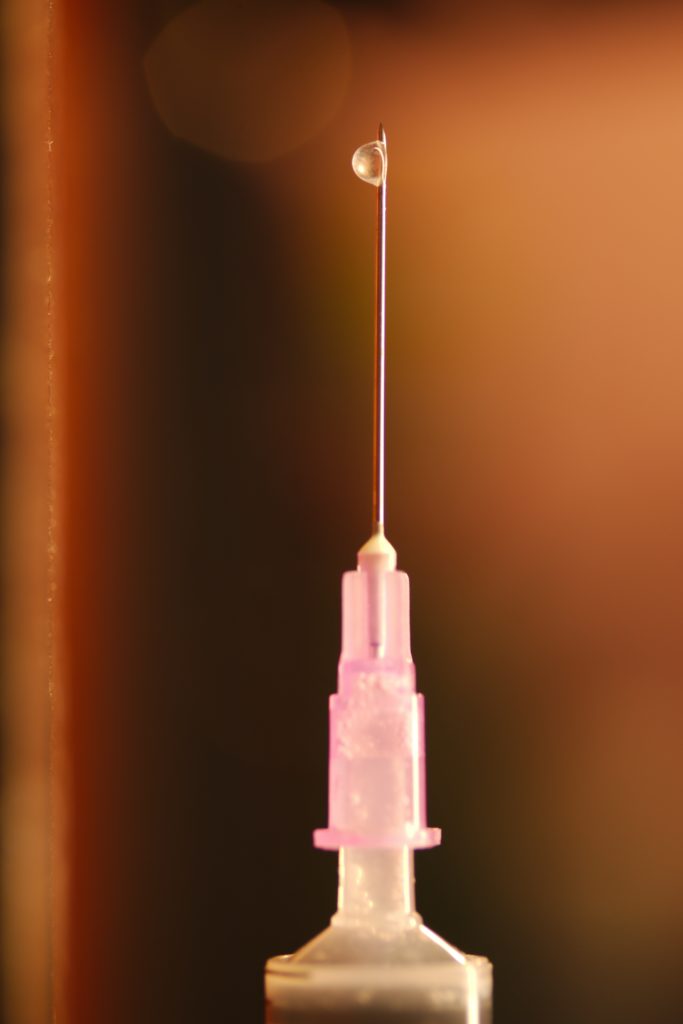What is Speedball?
A speedball is a mixture of the illicit drugs Heroin and Cocaine. Typically, speedballing involves both substances being injected into the bloodstream via needs, but they are sometimes snorted nasally together as well. Individuals who speedball claim to experience a more intense, longer-lasting high than that experienced when taking either drug alone.
Heroin is a common illicit opioid (derived from Morphine) that slows breathing and can lead to respiratory failure, especially when combined with another depressant, such as alcohol. Cocaine, a Stimulant, has nearly the opposite effect (such as increased heart rate and energy, rapid breathing, et cetera). It is a common misconception that mixing Heroin with Cocaine will either balance or cancel out the negative side effects of heroin. In reality, combining these substances is more dangerous than using either alone because their negative effects can be amplified when combined.
Mixing Heroin and Cocaine increases the risk of overdose or permanent damage to the body. Speedballing is especially risky because it forces the body to process more, different types of drugs simultaneously. Taking a depressant and a stimulant together causes a “push-pull” reaction in the body that can be very dangerous.
Cocaine use requires the body to take in and use more oxygen while heroin slows breathing — putting a strain on overactive lungs, heart, and brain and causing confusion and turmoil in the body. In particular, speedballing makes it more difficult for the body to receive the amount of oxygen needed to keep itself safe and balance out the effects of Cocaine. Even worse, because Cocaine wears off much faster than heroin, people who speedball tend to inject more often than those who use either Heroin or Cocaine separately.

How Is It Used
When alcohol is not involved in the composition of a speedball, the drug combination is usually injected. Cocaine and heroin typically come in a powdered form already, so they can easily be combined and dissolved into liquid form. When tablets like opioids or benzodiazepines are included, the user only has to crush them up and perform the same process.
Speedballs can also be snorted. An injection is more common, however, because its effects set in more quickly and more intensely, resulting in a more extreme speedball high.
Fentanyl Speedball
Speedballs of any kind are incredibly dangerous, but the introduction of fentanyl speedballs has greatly increased the drug cocktail’s lethality. Fentanyl in speedballs is often used to increase potency while keeping costs down, and many dealers don’t tell their customers that they’re consuming a drug 50 to 100 times more potent than morphine. Unintentionally consuming a speedball of cocaine including fentanyl can be deadly, and unfortunately, the rate of such overdoses are on the rise as the use of fentanyl spreads.
Side Effects
The side effects commonly associated with Cocaine are anxiety; hypersensitivity to sight, sound, and touch; high blood pressure; and irregular or rapid heartbeat. Opioids like Heroin are often linked to drowsiness and a slowed breathing rate. When combined, the side effects of speedballing primarily negatively impact the brain. Combining Cocaine and Heroin is a potent cocktail with a very high risk of unpredictable side effects.
Common side effects of speedballing include:
- Confusion or incoherence
- Blurred vision
- Drowsiness
- Paranoia
- Mental impairment due to lack of sleep
- Uncontrollable movements
- Incoherence
- Stupor
There are also long-term side effects of speedballing on the major organs of the body, including the lungs, heart, and liver. There are reports of individuals who experience manic episodes, paranoia, or depression after speedballing as well. Even worse, speedballing creates a high risk of death. Potentially fatal side effects of speedballing include:
- Stroke
- Heart attack
- Aneurysm
- Respiratory failure
Long-Term Effects
A major concern for those who continuously inject speedballs is the cumulative risk of overdose. However, other long-term potential consequences of injecting heroin and cocaine include, but are not limited to:
- Abscesses, cellulitis, and/or tissue necrosis from injection use.
- Contracting HIV or other bloodborne diseases through injection use.
- Vascular inflammation and clogging of the blood vessels from injected particles.
- Anorexia and malnourishment.
- Ischemic or hemorrhagic stroke.
- Other ischemic organ damage.
- Ulcerations in the GI tract.
- Kidney and liver injury.
- Heart muscle inflammation.
- Aortic ruptures.
- Heart attack.
- Seizures.
- Long-lasting cognitive impairments.
- Increased risk of developing Parkinson’s disease.
- Problems with impulsivity.
- Addiction.
Factors That Influence How Speedballing Impacts the User
There are many factors that influence how combining heroin and cocaine impacts the body. The same individual can use the same amount of the same drugs on different occasions and experience different effects each time. Some of these factors include:
- The drug itself: it’s purity, amount used, frequency of prior use, whether it has been cut or mixed with other drugs, and how it is administered
- The setting: who the user is with and where they are physically
- The individual taking the drugs: their mood, personality, mental health, medical history, and individual biology
Statistics
- In 2015, 63% of cocaine-related overdose deaths involved an opioid, especially heroin.
- By the first half of 2015, fentanyl-related deaths in Florida that involved cocaine increased to 42% (up from 17%).
The Dangers Of Mixing Drugs
The risk of respiratory failure is even more likely when speedballing due to differences in how long cocaine and heroin affect the body. The euphoric effects of cocaine wear off faster than heroin. When this happens, the full respiratory-impairing effects of heroin hit the body. Additionally, the combination of Cocaine and Heroin can strengthen the effects of each, often leading to an overdose.
In 2014, Cocaine was involved in the second-most number of overdose deaths, and use has increased each year. This increase comes directly after a steady decline in cocaine-involved overdoses between 2005 and 2009. Data from county coroners’ reports show that poly-drug use is driving that increase.
When there are no Opioids involved in cocaine overdose deaths you see an overall decline in recent years. But when you look at Cocaine and Opioids together, we see a more than doubling in the number of overdoses since 2010, with heroin and Synthetic Opioids increasingly involved in these deaths.
Speedball Related Overdoses
Starting in the Second Wave of the Opioid Epidemic, the spread of illicitly manufactured Fentanyl (a Synthetic Opioid up to 100 times stronger than morphine and 50 times stronger than Heroin), caused a sharp increase in overdose deaths.

Some purposely took Fentanyl because they knew of its deadly, potent properties. However, many people were not aware of the presence of Fentanyl in counterfeit pills (like Oxycodone) and heroin. Overdose deaths increased as a result.
The combination of Cocaine (currently at an all-time purity high) and Fentanyl (potentially lethal at only 2 milligrams or the weight of 6 grains of salt) was present in 1,542 deaths in 2015. Many researchers believe the real number of deaths is actually higher due to the way counties report drug deaths.
Speedball Treatment
According to a publication from the National Institute on Drug Abuse, a challenge in the treatment of speedball abuse is that treatments for heroin addiction are only moderately effective in helping those who use speedballs. There is no FDA-approved medicine to treat cocaine addiction, and the medications targeted specifically for opioid addiction won’t address the addiction to cocaine.
However, addiction treatment involves more than medication and, in fact, behavioral therapy is at the core of treatment, even when medication is prescribed. Therapies may include cognitive-behavioral therapy, which helps you to uncover the reasons for using heroin and cocaine and help you to adjust harmful beliefs and learn new and better ways of coping.

The Matrix Model is another therapeutic method that is geared toward the treatment of stimulant addiction and incorporates a number of different approaches, including relapse prevention, self-help program involvement, and drug abuse education.
With the long list of dangers that injecting speedball brings, those who are struggling with the abuse of this substance combination are in urgent need of addiction treatment. Reaching out for treatment could save your life or the life of someone you love.
Reclaim Your Life From Speedball
Speedball is a risky practice that can cause severe health, social and economic problems that should not be taken lightly. We Level Up Treatment Center can provide you, or someone you love, the tools to recover from the effects of speedballing with professional and safe treatment. Feel free to call us to speak with one of our counselors. We can inform you about this condition by giving you relevant information. Our specialists know what you are going through. Please know that each call is private and confidential.